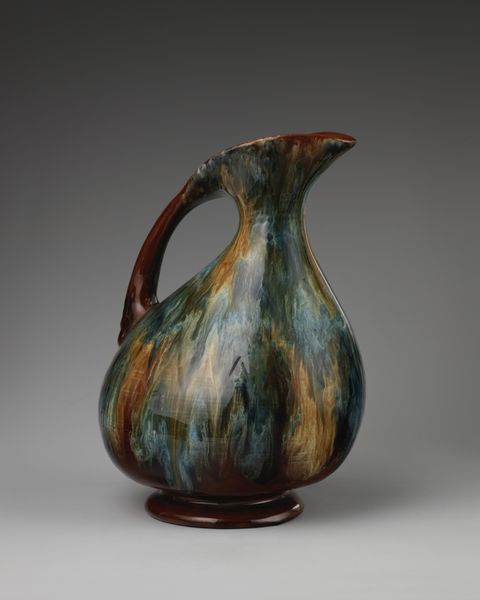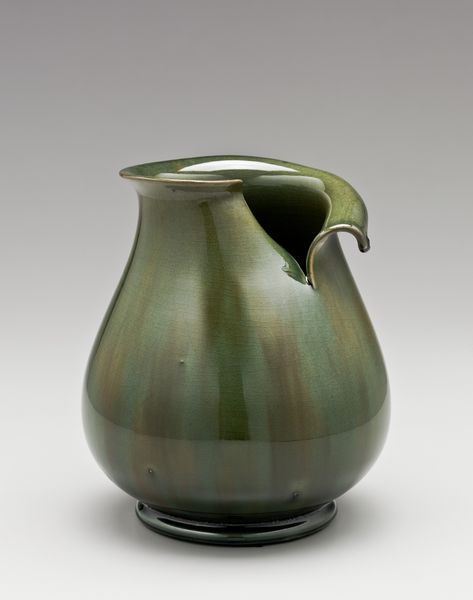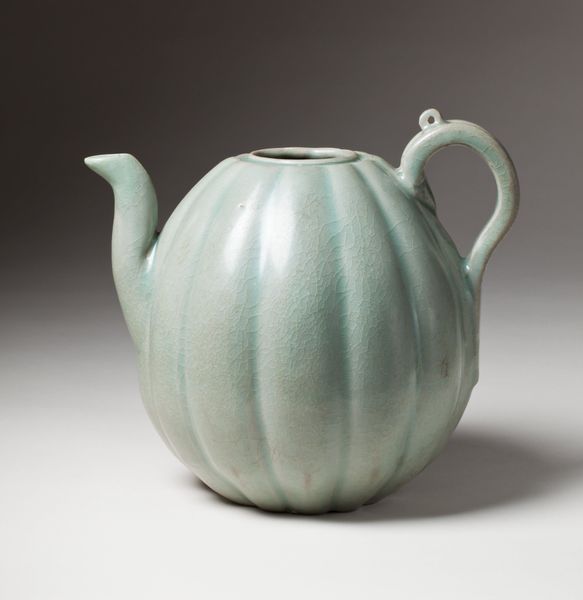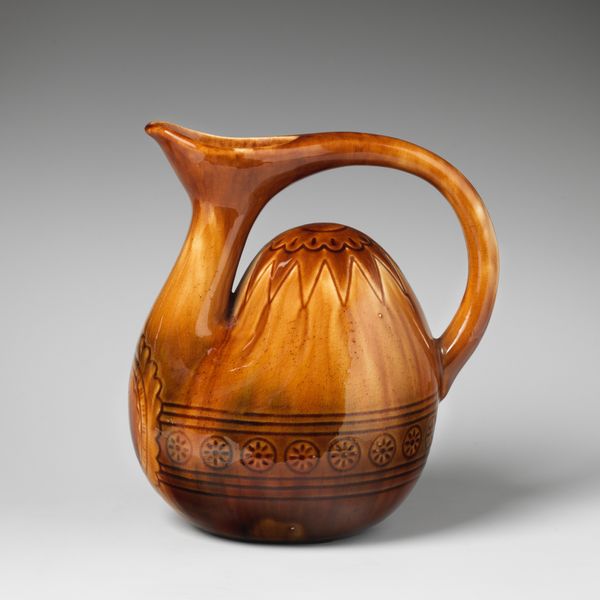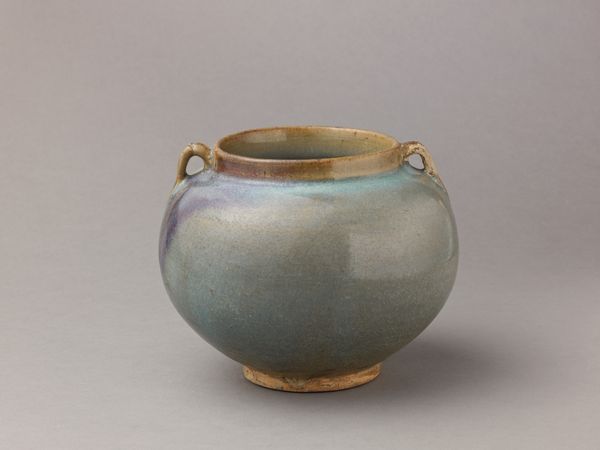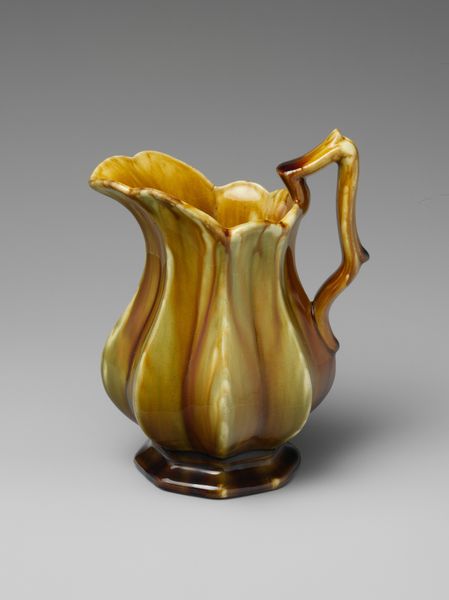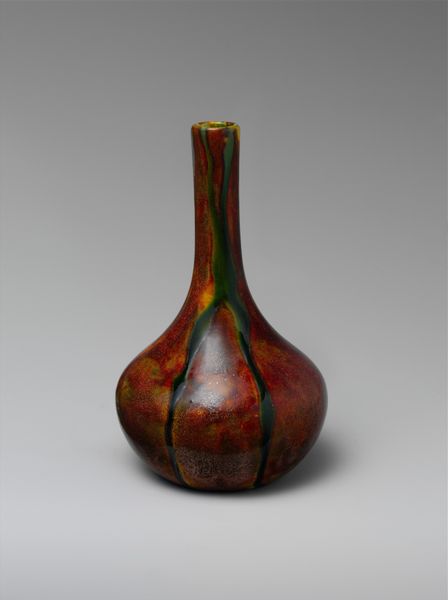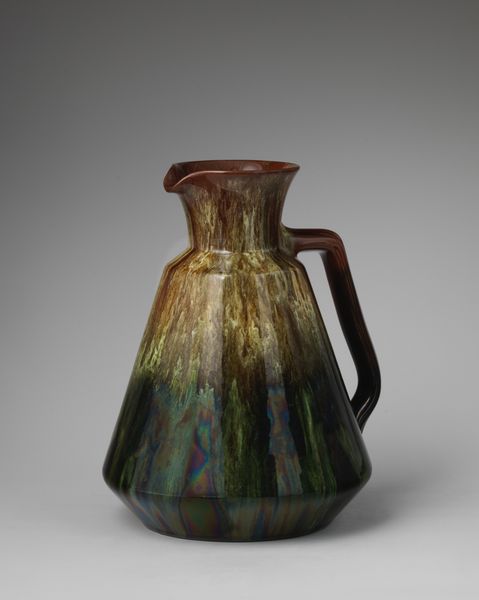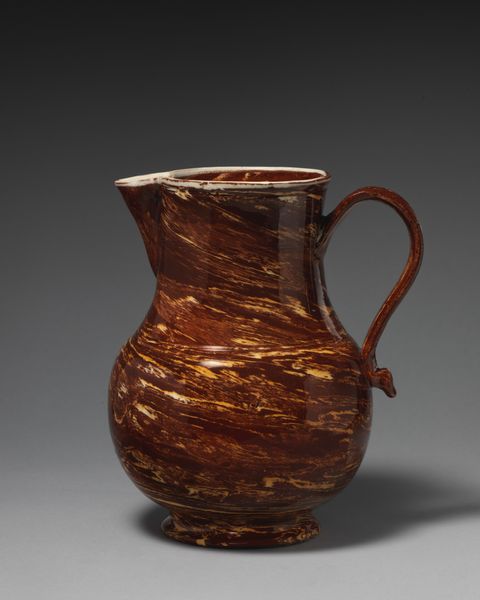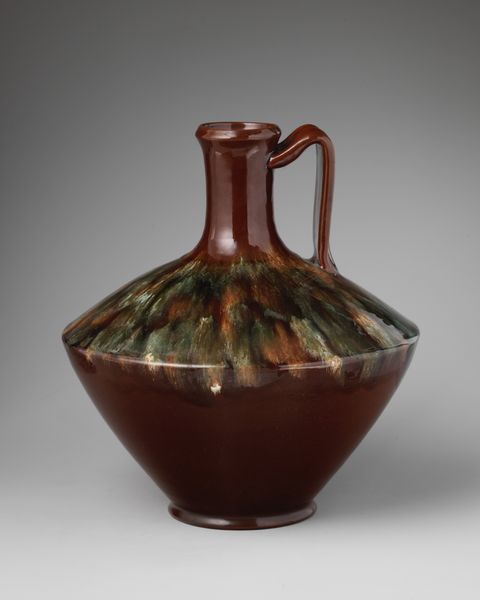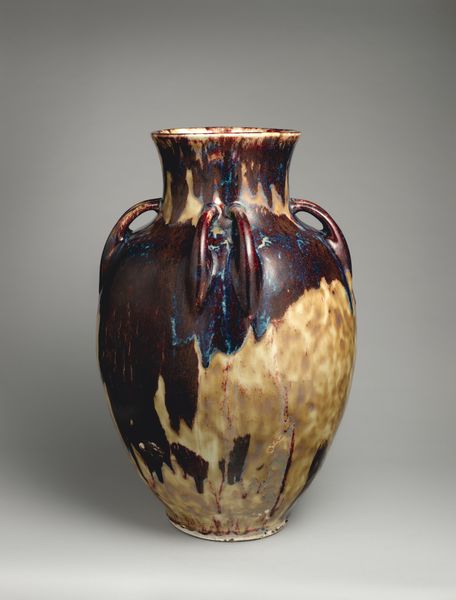
ceramic, sculpture
#
arts-&-crafts-movement
#
ceramic
#
food illustration
#
sculpture
#
decorative-art
Dimensions: Height: 6 1/4 in. (15.9 cm)
Copyright: Public Domain
Editor: Here we have a ceramic pitcher from the Linthorpe Pottery Works, crafted sometime between 1879 and 1882. I'm immediately drawn to its unusual shape and the rich, swirling glaze. It feels both earthy and refined at the same time. What can you tell me about it? Curator: Well, let's think about the imagery inherent in the object itself. What is a pitcher *for*? It holds and pours liquids. That immediately places it in a realm of hospitality, of sharing and sustenance. But it's not just functional, is it? Look at those vibrant greens and blues merging like a forest stream. The glaze is more than just decoration; it's invoking a sense of natural abundance. Does it perhaps recall the stories we have around fertility and nourishment? Editor: I hadn’t considered it that way, but that makes a lot of sense. It feels more than just a container, it almost represents something… life-giving? The colors are so fluid. Curator: Precisely! Now, think about the Arts and Crafts movement. There's often an emphasis on the handcrafted, a reaction against mass production. Consider also that its form alludes to classical amphora, doesn’t it? This is not *just* a pitcher; it carries echoes of both the past, ideas of handcrafted labour, and a deep yearning for natural beauty, reflecting societal anxieties around industrialisation and reconnecting with older myths. What do *you* feel when you observe this? Editor: It feels like holding history. There’s so much intention behind every curve and colour. Curator: Exactly. These crafted objects invite a unique opportunity to appreciate a maker's engagement with timeless symbolism. It’s not merely decorative art. It encapsulates so much more. Editor: This makes me want to re-evaluate everything I thought I knew about decorative arts! Curator: Wonderful! The language of objects, if you know how to read it, can be truly revealing.
Comments
No comments
Be the first to comment and join the conversation on the ultimate creative platform.
